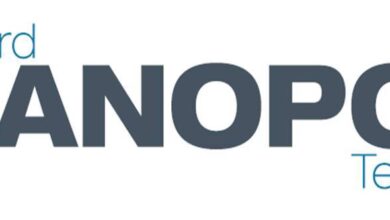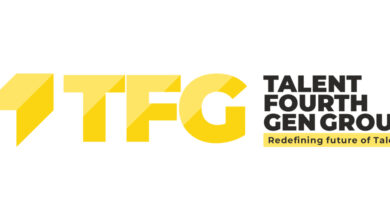New Findings Shed Light on Impact of COVID-19 on Communities of Color: Emotional and Economic Challenges Expected to Extend through 2023

New Research Helps Identify Equity Gaps, Ways to Create More Resilient Communities
WASHINGTON–(BUSINESS WIRE)–#EMGTwitter–Even with more than 300 million doses of the COVID-19 vaccine having been administered in the US, a new research project shows the virus will continue to wreak emotional and economic havoc on vulnerable communities throughout America for years to come. This is just one of the key findings in the “Impact of COVID-19 on Communities of Color,” a comprehensive year-long study conducted by Healthcare Ready, a nonprofit organization that helps vulnerable communities prepare for, respond to, and recover from natural disasters that are on the rise.
Supported with a grant from the Walmart Foundation, Healthcare Ready enlisted polling firm YouGov to design an eight-question survey that measured how individuals fared from March 2020 to May 2021. The survey comprised representative samples of the population at four points during the pandemic (October 2020, December 2020, March 2021, and May 2021). For full survey methodology, click here.
“Despite the fact that the nation is nearing the Biden administration’s goal of at least 70% of adults being partially vaccinated by the Fourth of July, a large portion of our country is still reeling from the emotional, mental, and economic impact of the pandemic, with no end in sight,” said Nicolette Louissaint, PhD, executive director of Healthcare Ready. “Through the support of the Walmart Foundation, we were able to research the toll that the pandemic has taken on communities of color. The project aims to shed light on the inequities, challenges and concerns these communities have been facing since March 2020 and raise up their concerns so they can be addressed equitably into recovery.”
“The results of the study have identified barriers to much needed resources during a disaster including healthcare, housing, food and employment for underserved communities,” said Brooks Nelson, Senior Manager of Community Resiliency for Walmart. “The good work that Healthcare Ready is doing will better prepare communities of color and other groups for the next time a disaster strikes, and we’re proud to support their work.”
In partnership with researchers from the University of Maryland and the University of Southern Alabama, Healthcare Ready identified three linked research strategies to identify America’s most vulnerable communities and determine how they are faring during the pandemic. Key findings include:
- One in two respondents (50%) said their emotional or mental health situation, or that of their household, worsened in October 2020; 5 percentage points more said their state worsened in December 2020 (55%).
- In October 2020, nearly 1 in 5 Black respondents (19%) cited fear of being treated poorly or disrespectfully by those they would seek help from as a barrier which had stopped them from getting help during the pandemic. This was a significantly different proportion than White (6%) and Hispanic (9%) respondents. Click here to explore the interactive poll results for the US.
- In October 2020 (48%), December 2020 (55%), and March 2021 (53%), roughly half of Americans said they encountered at least one barrier that prevented them from getting help during the pandemic. Top barriers to help included fear of getting sick and uncertainty about what help was available.
- In March 2021, even with vaccines being distributed and a sense of normalcy beginning to return, 50% of Americans said their emotional or mental health situation, or that of their household worsened since July 2020.
- There were also significant differences between demographic groups, including race, in the most severe challenges experienced. For example, among those who have faced challenges during the pandemic, Hispanic respondents were more likely to indicate that the challenge that most harmed them during the pandemic was the ability to pay for medicines or treatments compared to White respondents (2% of White respondents compared to 10% of Hispanic respondents in October 2020, 4% of White respondents and 7% of Hispanic respondents in December 2020, and 5% of White respondents compared to 11% of Hispanic respondents in March 2021).
To qualify these findings further, Healthcare Ready also took a deeper dive into two areas of Louisiana and Texas to see the impact of the virus at a local level. Interviews were conducted with more than thirty community-based organizations in Baton Rouge, La., and Hidalgo Counties to identify the most pressing needs including:
- Addressing food and employment insecurity;
- Providing long-term housing and utility relief;
- Creating resources to address mental/behavioral health support;
- Increasing access to healthcare (including equitable access to COVID-19 healthcare resources);
- Addressing challenges in accessing adequate healthcare due to hesitancy/mistrust of the system and inability to pay for services (e.g., uninsured patients), and;
- Answering concerns around immigration status and lack of understanding of how to navigate the healthcare system contributing to hesitancy in seeking care.
“Time and time again, we’ve seen the stark reality that disasters underscore the need for strong partnerships and trusted relationships within a community to help support those who may be most vulnerable during a crisis,” said Louissaint. “The stories and voices captured in this research study are an essential tool to help government and policy makers make need changes such as increasing sustainable funding and enhancing networks to build more resilient communities.
“We look forward to sharing this final assessment with community leaders in Baton Rouge and Hidalgo Counties to provide insight how groups are connected and where additional relationships can be fostered to fortify networks in advance of the next disaster. It’s critical that we promote interventions and mitigation plans that meaningfully close the preparedness gap for communities of color and other groups who remain especially vulnerable in a disaster,” she concluded.
The full Impact of COVID-19 on Communities of Color report can be found here.
About Healthcare Ready
Healthcare Ready is a nonprofit organization established in 2007 to help strengthen the US healthcare system and assist communities in planning for, responding to, and recovering from disasters and disease pandemics. It serves as a linkage point between industry, and local, state, and federal governments to help build resilient communities and safeguard patients before, during, and after public health emergencies. For more information, visit www.healthcareready.org or find us on Twitter @HC_Ready.
About the YouGov survey
All figures, unless otherwise stated, are from YouGov Plc. The surveys were carried out online. The figures have been weighted and are representative of all US adults (aged 18+).
October 2020: Total sample size was 1302 adults. Fieldwork was undertaken between 29th – 30th October 2020.
December 2020: Total sample size was 1689 adults. Fieldwork was undertaken 22nd December 2020. The survey was carried out online.
March 2021: Total sample size was 1345 adults. Fieldwork was undertaken between 4th – 5th March 2021. The survey was carried out online.
Contacts
Mindy Wright
[email protected]
619-376-5505




